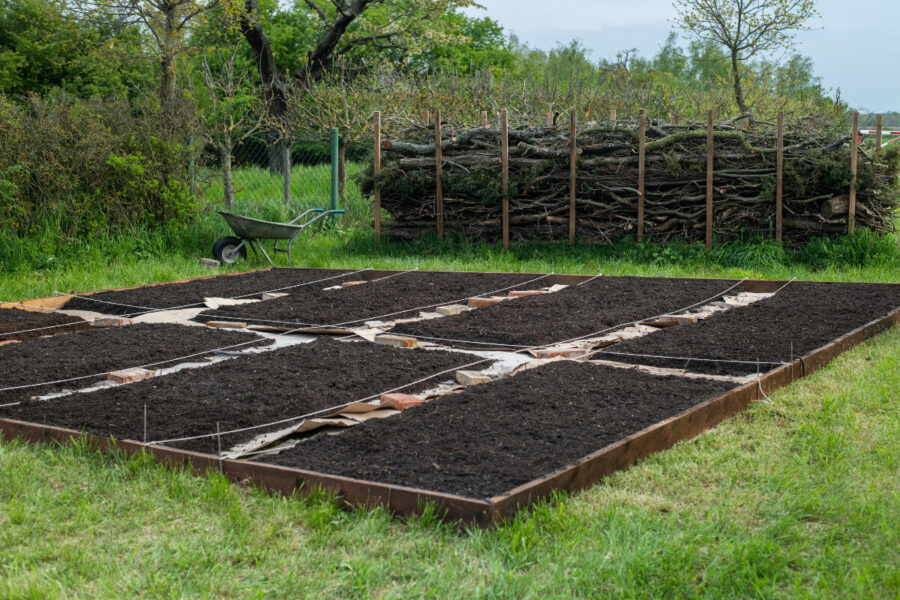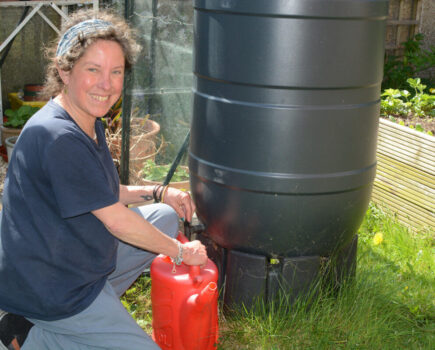Toby explains how to boost results and save time with the magic of mulch
It’s mine, all mine, all mine!’ was the happy thought running through my mind as the tractor-trailer tipped out its cargo of compost. Tired of the high delivery costs and ordering small amounts of ‘black gold’, I’d decided to go large, and buy a full 16-tonne mega-load of the stuff.
And here it was in all its steaming glory, but as the compost tumbled from the trailer and its shadow began to resemble the brooding outline of K2, a new thought crossed my mind…
I was going to have to move this stuff. On my tod!
As problems go, too much compost is a good one to have, especially when starting my ‘job of the month’ which is creating new ‘no-dig’ beds.
I’ve been a ‘no-digger’ for a long time, from all the way back when ‘growing your own’ was so niche that allotments were going to wrack and ruin because councils couldn’t persuade tenants to take them on.
In the village where I lived, the existence of an allotment site just 100 yards up the road from my house was a complete surprise. I only became aware of its existence when a note from the council fell on the mat, informing residents that felling trees for firewood from the ‘allotments’ wasn’t allowed!
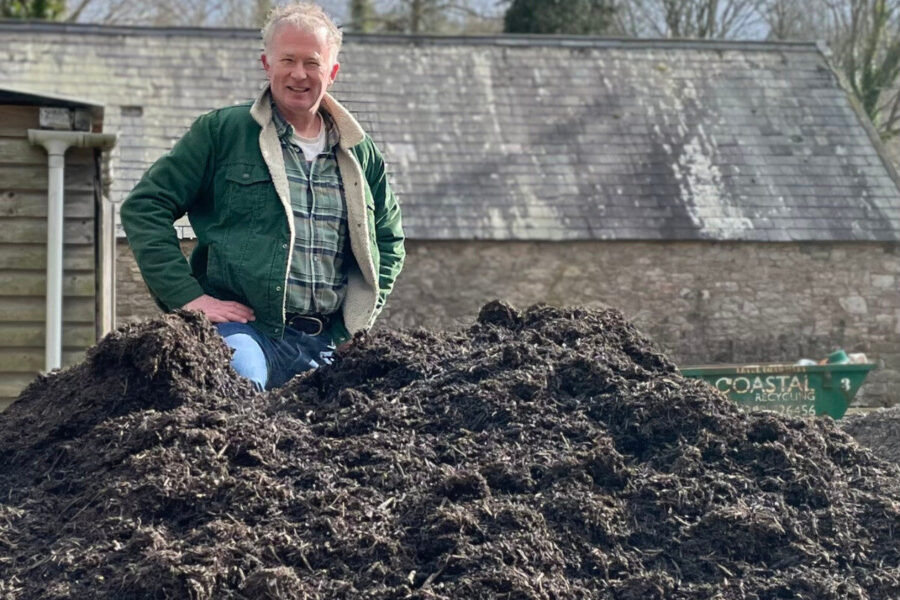
Why you should leave the soil undisturbed
After jumping the fence to take a closer look, sure enough amongst the birch and willow was the archeology of long abandoned cloches and corrugated iron – evidence that gardeners had once toiled there.
To cut a long story of cutting brash short, I immediately paid my three quid council sub and spent the next few weeks taming a tennis court-sized patch of scrub.
Although the above ground top-growth was abundant, it wasn’t the reason I went no-dig. That was due to the below-ground heavy clay and a book called Successful Gardening Without Digging written in the 1950s by no-dig pioneer James Gunston. The content was inspirational, although the reading was heavier than my clay. But after all the scrub-busting, his words gave me a way to dodge the spade-work.
The fundamental principle of no-dig gardening is to leave the soil in its natural undisturbed state, so that the micro-life (fungi, beneficial bacteria, worms etc) essential for healthy plant growth can improve the soil as nature intended.
It makes good gardening sense as plants have evolved to thrive in undisturbed soils without help from humans, spades and rotavators.
If cultivated in this way, and the ground is regularly mulched, fertility builds and thanks to the work of the microorganisms and worms the soil structure becomes airy and moisture retentive, which is just what plants like.
Crucially for me then, and now, no-dig is labour saving and so decades after my first no-dig plot I am again cutting down brush and smothering weeds and letting mulch do the hard work for me.
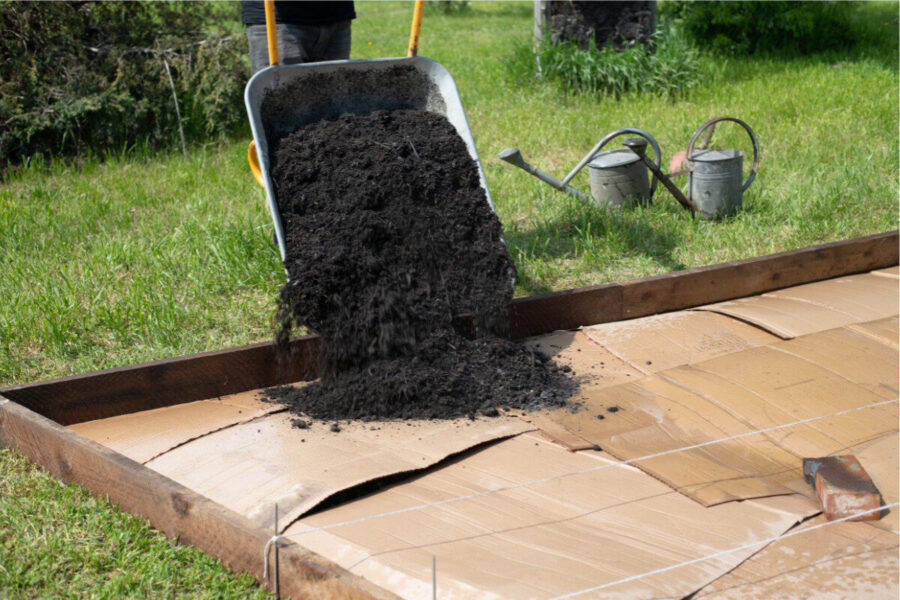
Why cardboard is king
Although not digging your plot is the big idea here, woody weeds such a bramble and tough customers like burdock are best spaded away as they have a habit of coming back, before covering the soil with a smooth compostable material.
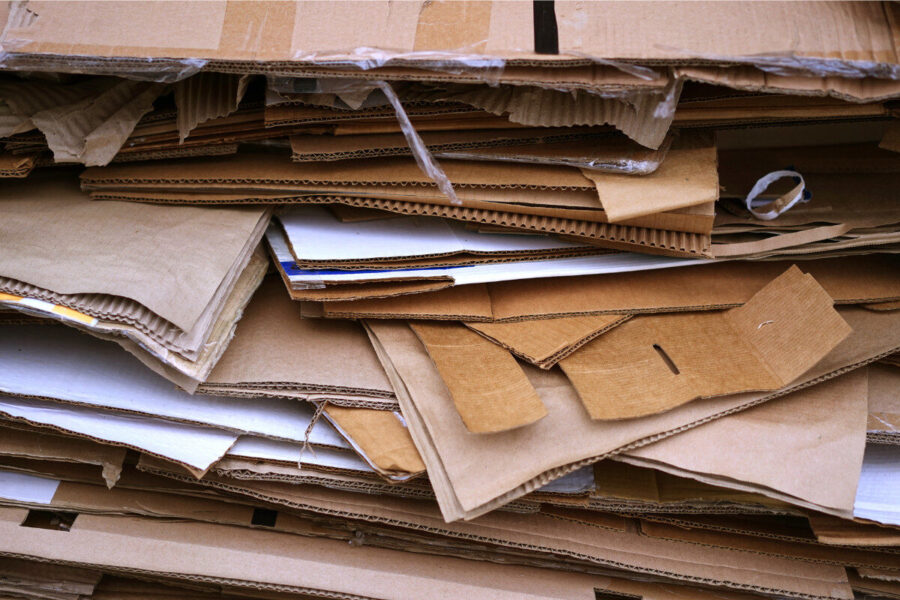
On my original plot, the then-ubiquitous newspaper was the choice of covering, and a layer just three sheets thick was considered enough to smother most weeds. These days cardboard is king – the by-product of our delivery culture has taken the broadsheets’ crown and frankly it’s much better material to work with than newspaper, as it doesn’t blow about as much and isn’t as distracting as pages full of interesting articles!
I source my cardboard from shops – they pay to have the stuff taken away so are happy to give over their spent boxes. Also, commercial cardboards are often a heavier grade than the stuff from Amazon, though the down side is plastic packing tape which takes time to peel away. You could leave this on, but because it has the half-life of plutonium, you’re guaranteed to become reacquainted with it somewhere down the line, so remove it we must.
If peeling tape takes too much time from the free stuff, you can buy rolls of plastic-free recycled membrane, and £50 buys a 1.2x75m (4x246ft) roll, though the weight/grade of the cardboard is generally light so it won’t last that long. It’s fine for covering grass but wouldn’t cut it on weeds like mine.
It’s worth noting that some gardeners don’t like this cardboard layer, believing it negatively affects soil aeration. The presence of worms below cardboard laid on the soil is often cited as evidence that they’re being forced up to the surface by a lack of air. I just think they like the taste of cardboard but even if it did cause harm, the effects are only temporary, and not noticeable to me, and certainly outweighed by the benefit of creating a smooth surface for the next mulch layer.
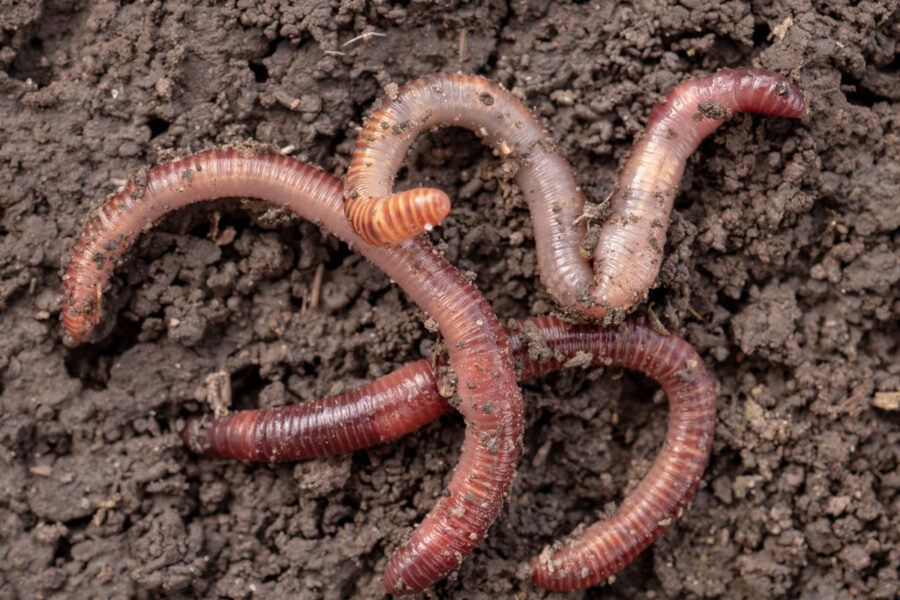
Weeds are no match for mulch
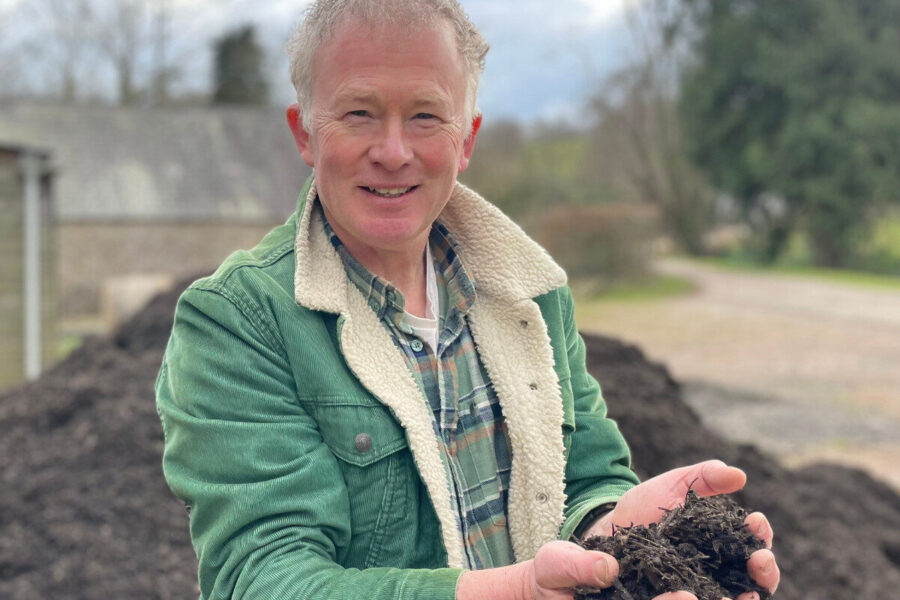
And this is where my mountainous delivery of council green-waste compost comes in. Starting a no-dig-system, let alone keeping it going, requires more compost than most garden heaps can supply as the first step is burying the cardboard below with a 10cm (4in) quilt of the stuff to starve weeds below of sunlight and put them to sleep.
Weeds might not be able to come up but seeds and plugs planted in the mulch have the necessary oomph to push through to the soil below.
And while wind-blown weed seeds will arrive or come up from below as crops are lifted, if you tickle through regularly with a hoe and keep mulching with compost they’re easy to nip in the bud.
If any do have the temerity to make it through, use an old bread knife to sever the top just below the soil level and re-cover with cardboard and mulch, which further knocks them back into eventual submission.
I would say that as far as mulch goes, you can’t have too much. Though looking at this heap, I’m beginning to wonder…
Find more tips, advice and articles like this at the Amateur Gardening website. Subscribe to Amateur Gardening magazine now

